*NURSING > QUESTIONS & ANSWERS > Chapter 21: The Child with Cognitive, Sensory, or Communication Impairment (All)
Chapter 21: The Child with Cognitive, Sensory, or Communication Impairment
Document Content and Description Below
1. The American Association on Intellectual and Developmental Disabilities (AAIDD), formerly the American Association on Cognitive Impairment, classifies cognitive impairment based on what parameter... ? a. Age of onset b. Subaverage intelligence c. Adaptive skill domains d. Causative factors for cognitive impairment ANS: C The AAIDD has categorized cognitive impairment into adaptive skill domains. The child must demonstrate functional impairment in at least two of the following adaptive skill domains: communication, self-care, home living, social skills, use of community resources, self-direction, health and safety, functional academics, leisure, and work. Age of onset before 18 years is part of the former criteria. Low intelligence quotient (IQ) alone is not the sole criterion for cognitive impairment. Etiology is not part of the classification. DIF: Cognitive Level: Understanding REF: p. 824 TOP: Nursing Process: Assessment MSC: Client Needs: Psychosocial Integrity 2. Secondary prevention for cognitive impairment includes what activity? a. Genetic counseling b. Avoidance of prenatal rubella infection c. Preschool education and counseling services d. Newborn screening for treatable inborn errors of metabolism ANS: D Secondary prevention involves activities that are designed to identify the condition early and initiate treatment to avert cerebral damage. Inborn errors of metabolism such as hypothyroidism, phenylketonuria, and galactosemia can cause cognitive impairment. Genetic counseling and avoidance of prenatal rubella infections are examples of primary prevention strategies to preclude the occurrence of disorders that can cause cognitive impairment. Preschool education and counseling services are examples of tertiary prevention. These are designed to include early identification of conditions and provision of appropriate therapies and rehabilitation services. DIF: Cognitive Level: Understanding REF: p. 826 TOP: Nursing Process: Implementation MSC: Client Needs: Health Promotion and Maintenance 3. What is a primary goal in caring for a child with cognitive impairment? a. Developing vocational skills b. Promoting optimum development c. Finding appropriate out-of-home care d. Helping child and family adjust to future care ANS: B The goal for children with cognitive impairment is the promotion of optimum social, physical, cognitive, and adaptive development as individuals within a family and community. Vocational skills are only one part of that goal. The focus must also be on the family and other aspects of development. Out-of-home care is considered part of the child’s development. Optimum development includes adjustment for both the family and child. DIF: Cognitive Level: Understanding REF: p. 828 TOP: Nursing Process: Planning MSC: Client Needs: Psychosocial Integrity 4. One of the techniques that has been especially useful for learners having cognitive impairment is called fading. What description best explains this technique? a. Positive reinforcement when tasks or behaviors are mastered b. Repeated verbal explanations until tasks are faded into the child’s development c. Negative reinforcement for specific tasks or behaviors that need to be faded out d. Gradually reduces the assistance given to the child so the child becomes more independent ANS: D Fading is physically taking the child through each sequence of the desired activity and gradually fading out the physical assistance so the child becomes more independent. Positive reinforcement when tasks or behaviors are mastered is part of behavior modification. An essential component is ignoring undesirable behaviors. Verbal explanations are not as effective as demonstration and physical guidance. Consistent negative reinforcement is helpful, but positive reinforcement that focuses on skill attainment should be incorporated. DIF: Cognitive Level: Analyzing REF: p. 827 TOP: Nursing Process: Evaluation MSC: Client Needs: Health Promotion and Maintenance 5. The parents of a child with cognitive impairment ask the nurse for guidance with discipline. What should the nurse’s recommendation be based on? a. Discipline is ineffective with cognitively impaired children. b. Cognitively impaired children do not require discipline. c. Behavior modification is an excellent form of discipline. d. Physical punishment is the most appropriate form of discipline. ANS: C Discipline must begin early. Limit-setting measures must be clear, simple, consistent, and appropriate for the child’s mental age. Behavior modification, especially reinforcement of desired behavior and use of time-out procedures, is an appropriate form of behavior control. Aversive strategies should be avoided in disciplining the child. DIF: Cognitive Level: Applying REF: p. 827 TOP: Nursing Process: Implementation MSC: Client Needs: Health Promotion and Maintenance 6. What intervention is most appropriate to facilitate social development of a child with a cognitive impairment? a. Provide age-appropriate toys and play activities. b. Avoid exposure to strangers who may not understand cognitive development. c. Provide peer experiences, such as infant stimulation and preschool programs. d. Emphasize mastery of physical skills because they are delayed more often than verbal skills. ANS: C The acquisition of social skills is a complex task. Initially, an infant stimulation program should be used. Children of all ages need peer relationships. Parents should enroll the child in preschool. When older, they should have peer experiences similar to those of other children such as group outings, Boy and Girl Scouts, and Special Olympics. Providing age-appropriate toys and play activities is important, but peer interactions facilitate social development. Parents should expose the child to individuals who do not know the child. This enables the child to practice social skills. Verbal skills are delayed more often than physical skills. DIF: Cognitive Level: Applying REF: p. 835 TOP: Nursing Process: Implementation MSC: Client Needs: Health Promotion and Maintenance [Show More]
Last updated: 1 year ago
Preview 1 out of 251 pages
Instant download
.png)
Instant download
Reviews( 0 )
Document information
Connected school, study & course
About the document
Uploaded On
Apr 27, 2022
Number of pages
251
Written in
Additional information
This document has been written for:
Uploaded
Apr 27, 2022
Downloads
0
Views
71





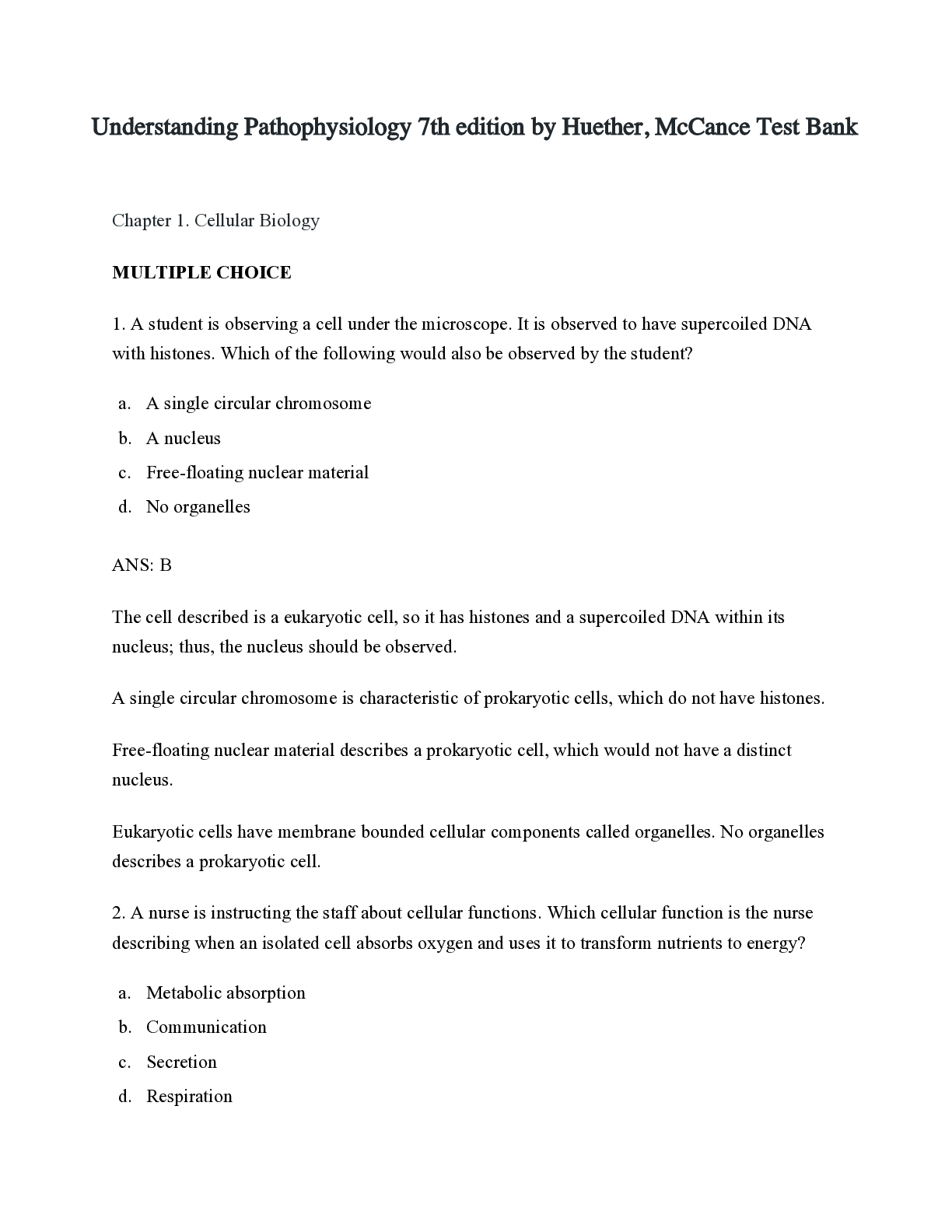
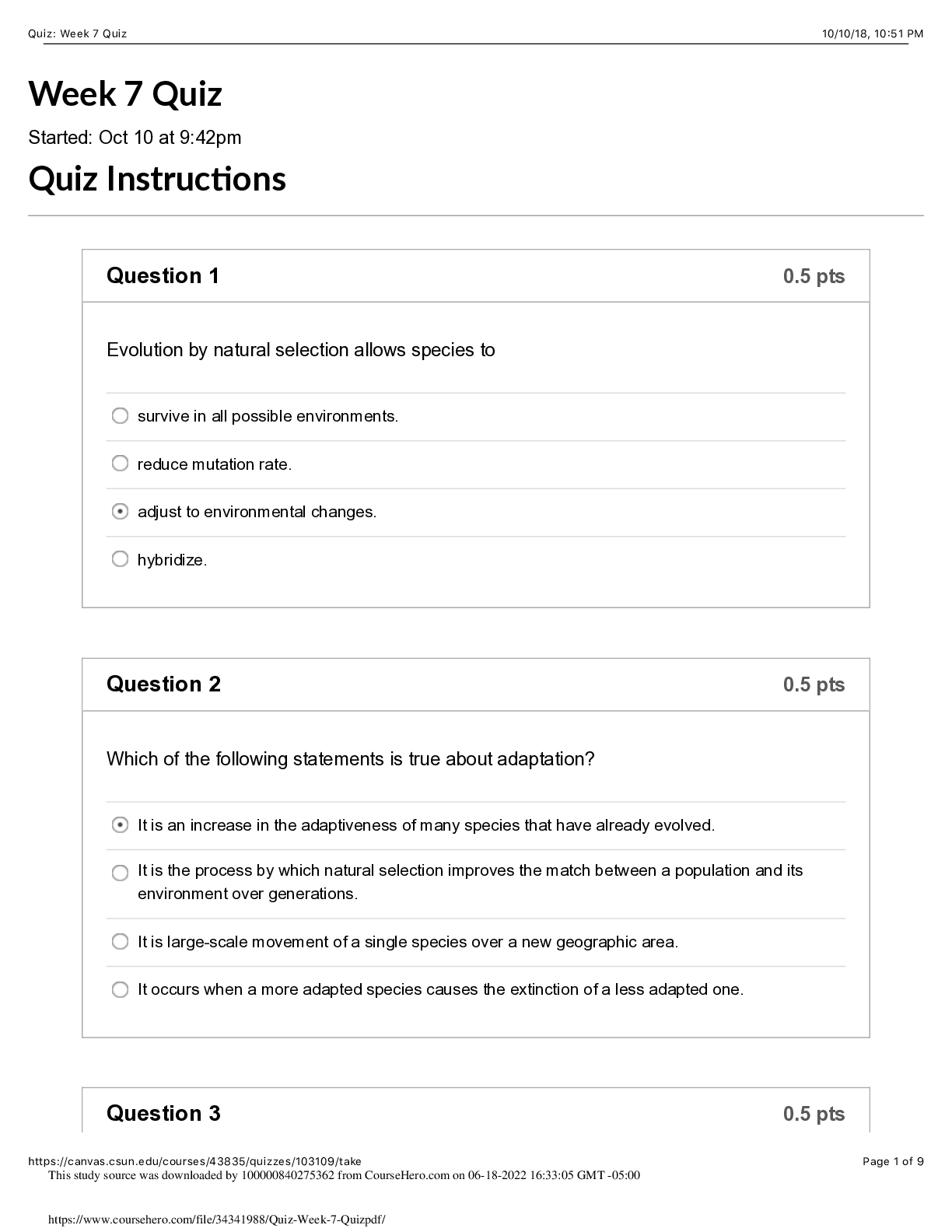
.png)
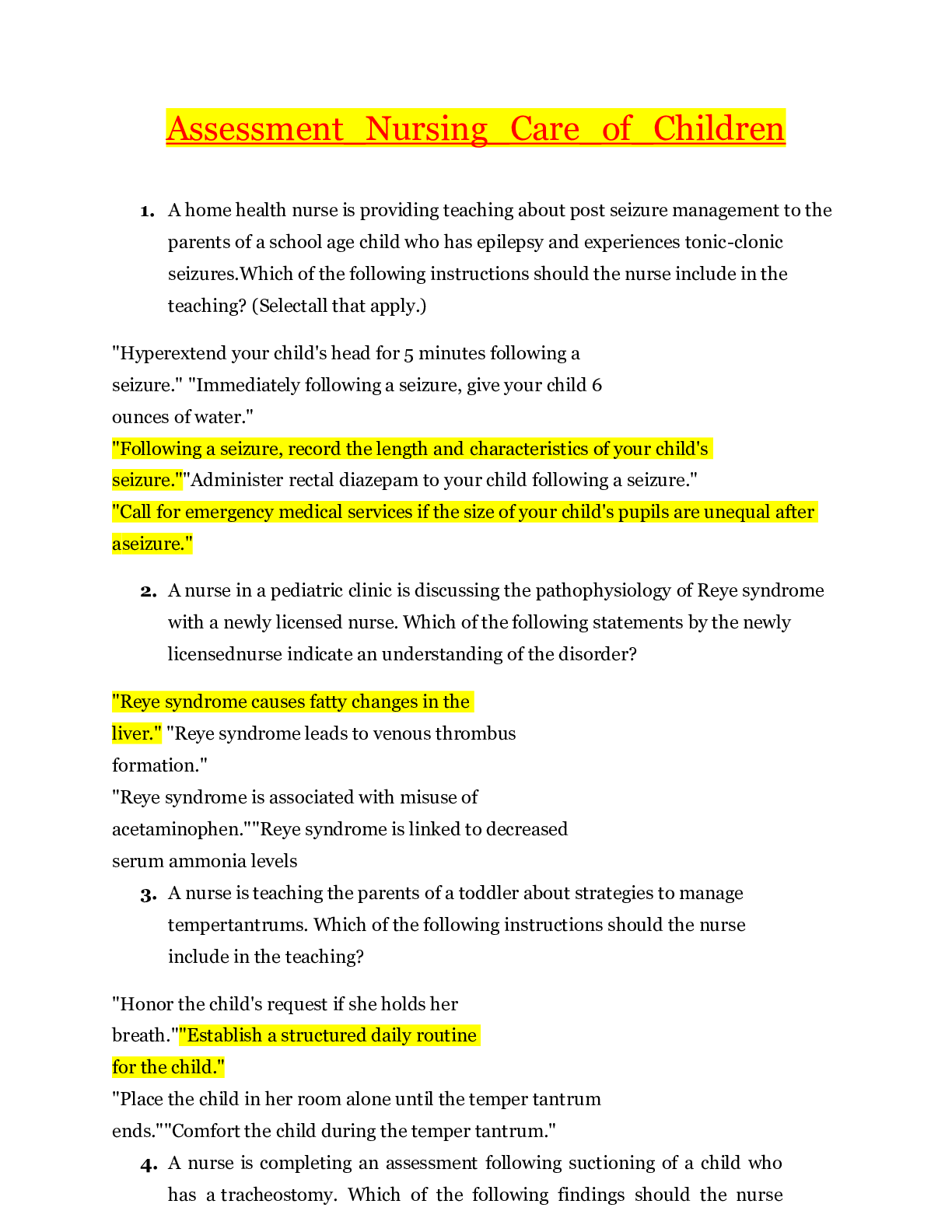
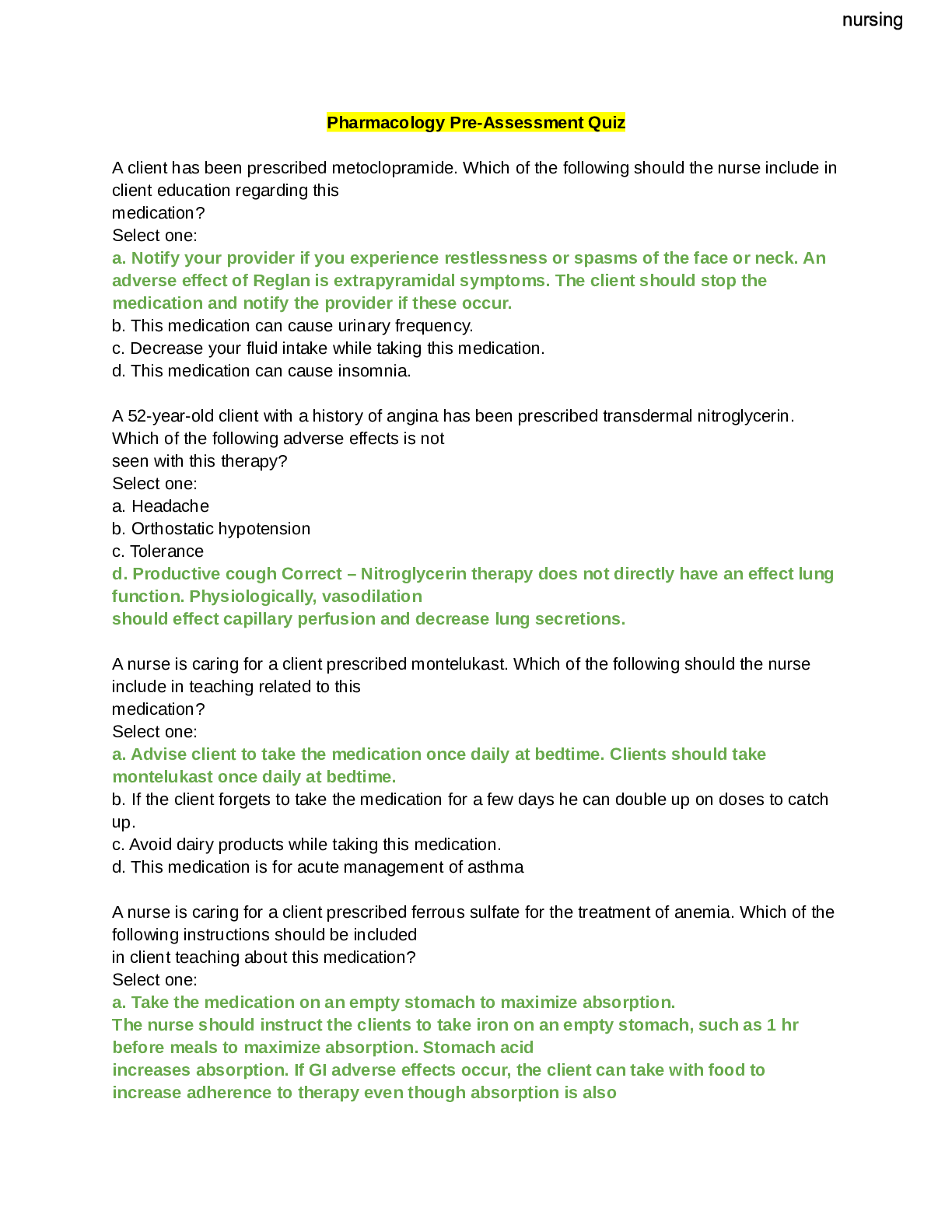

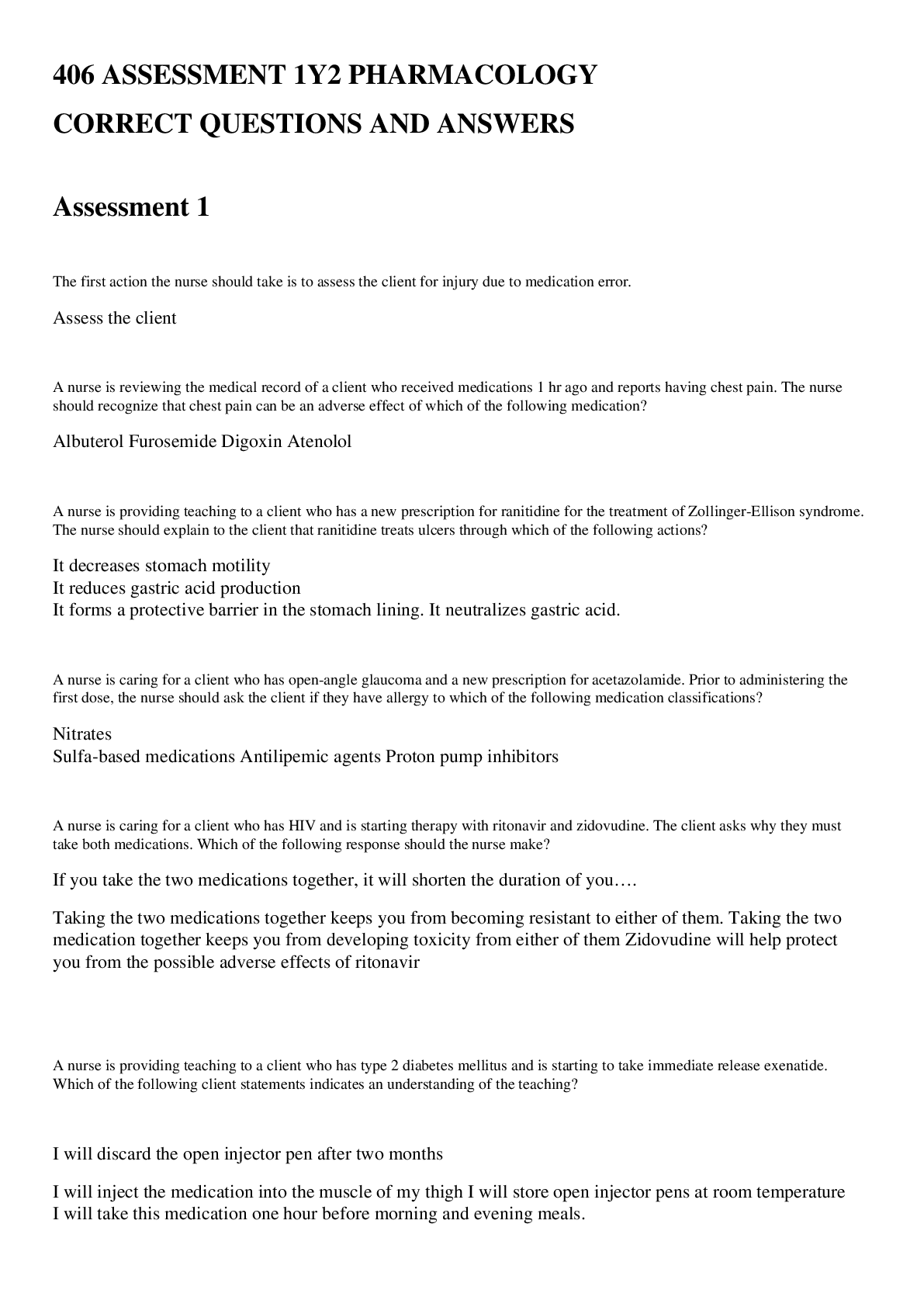
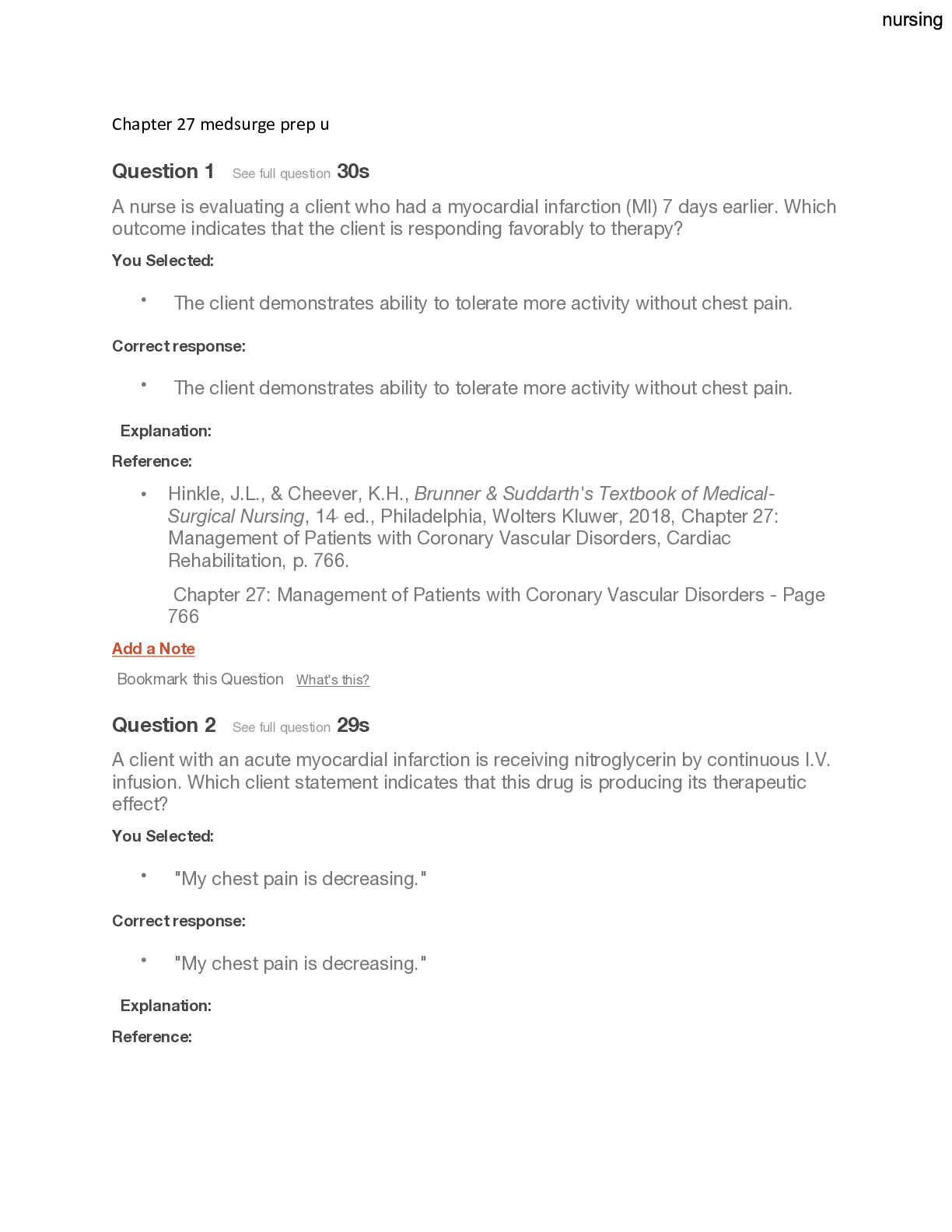
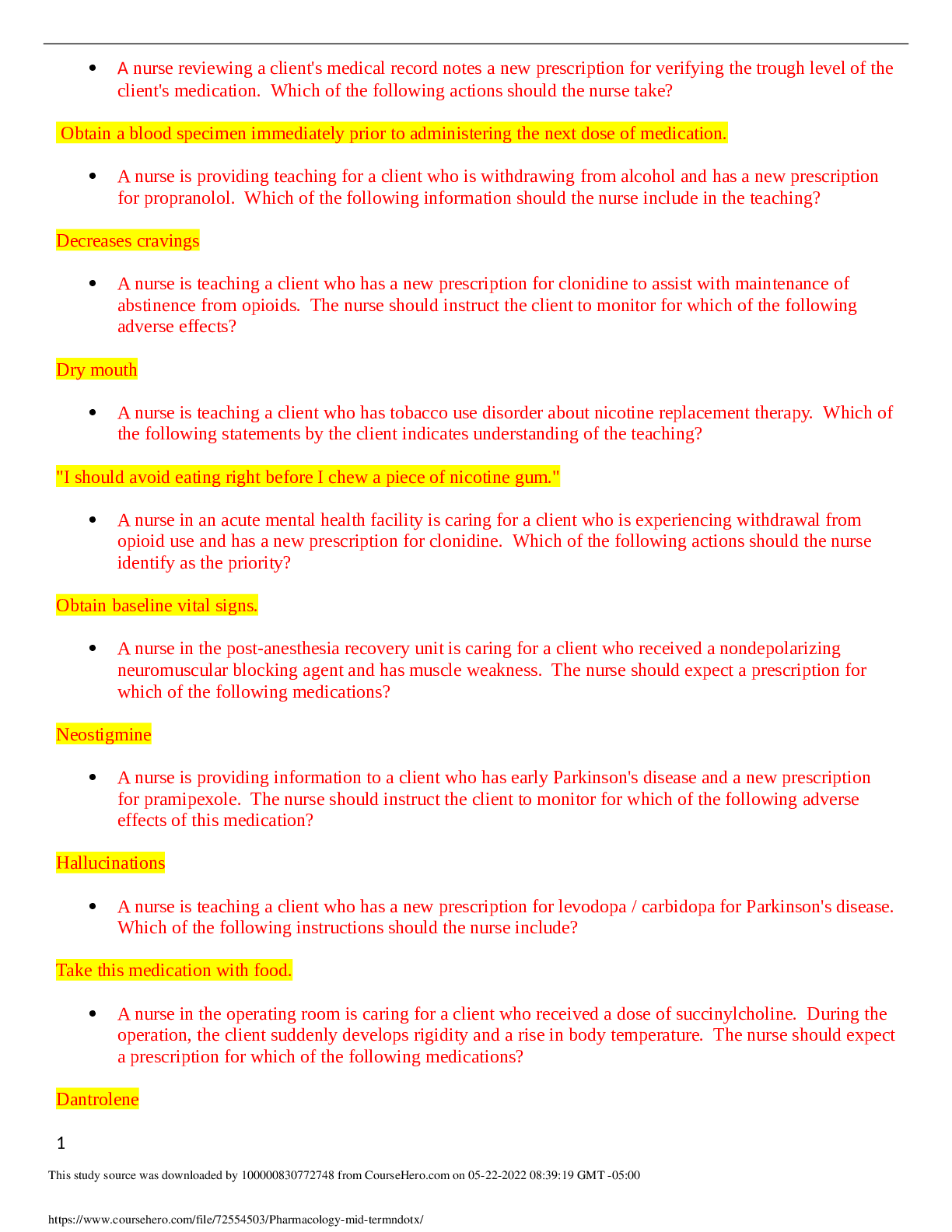
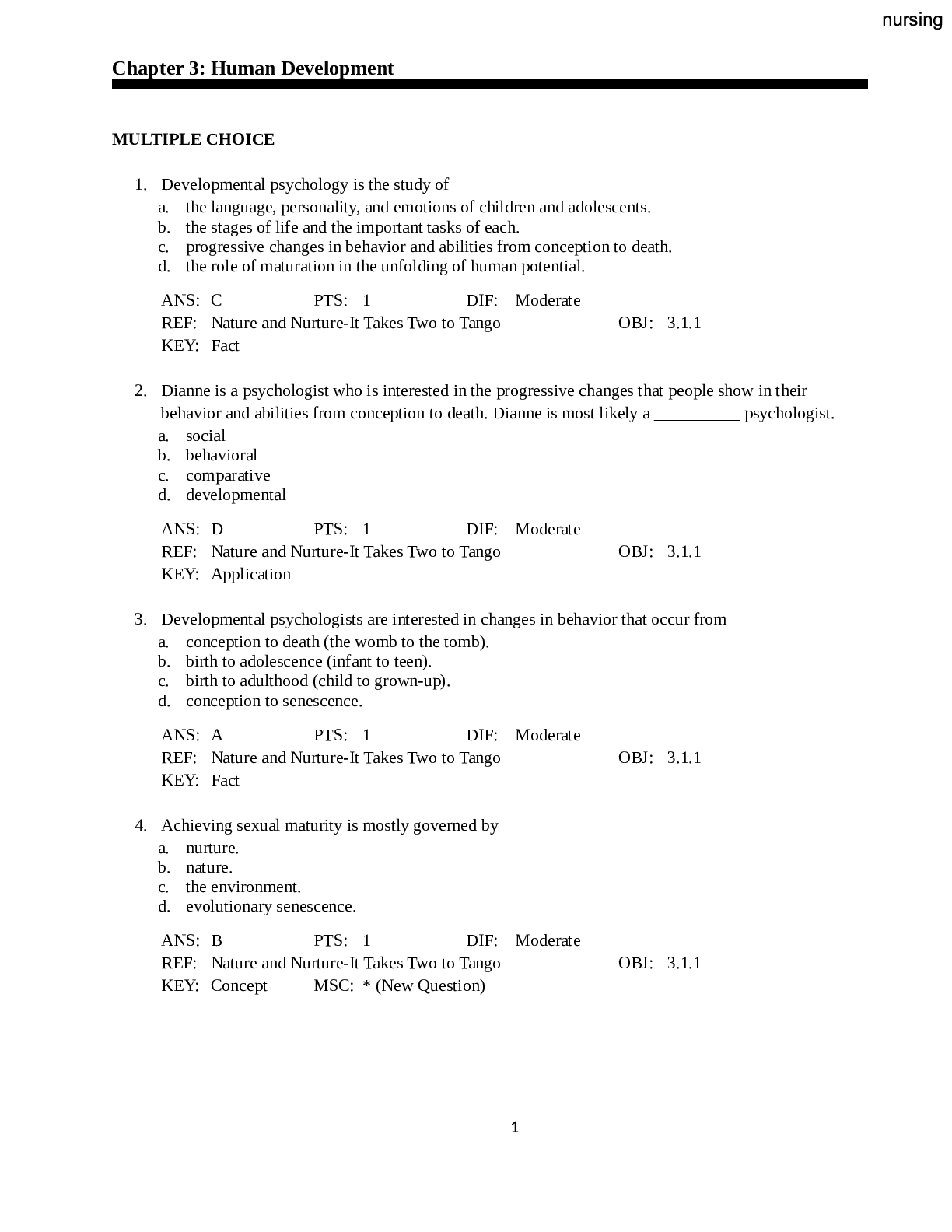



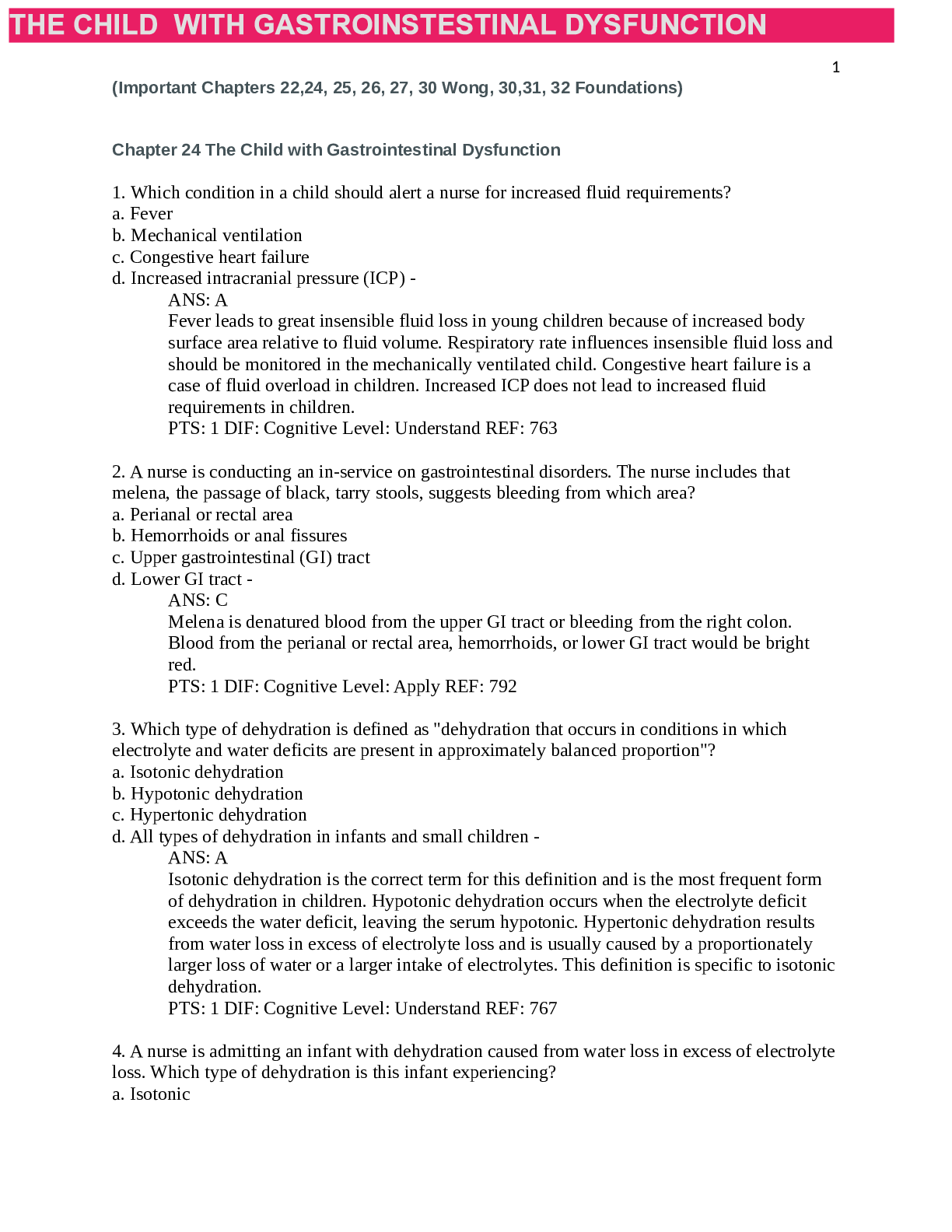


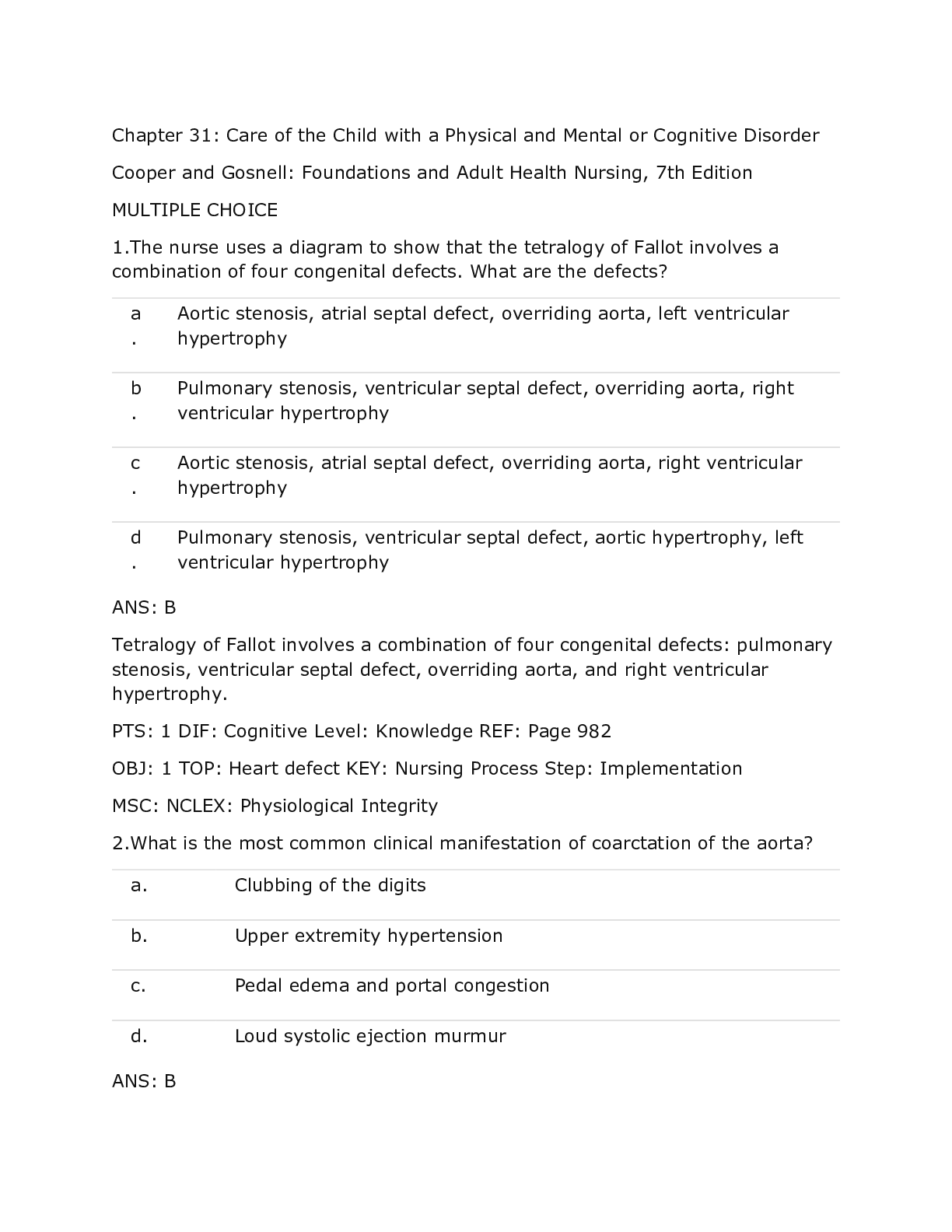
.png)
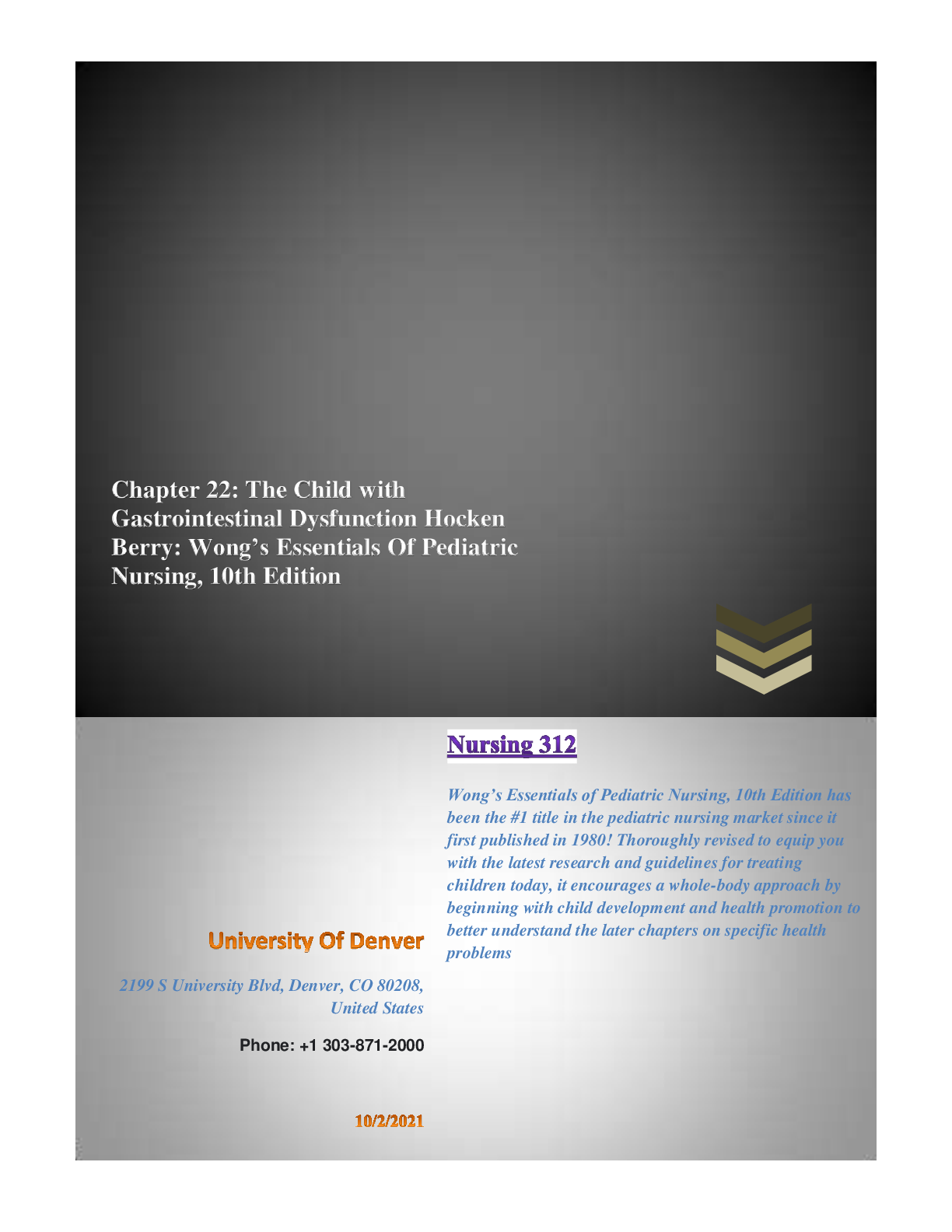

.png)
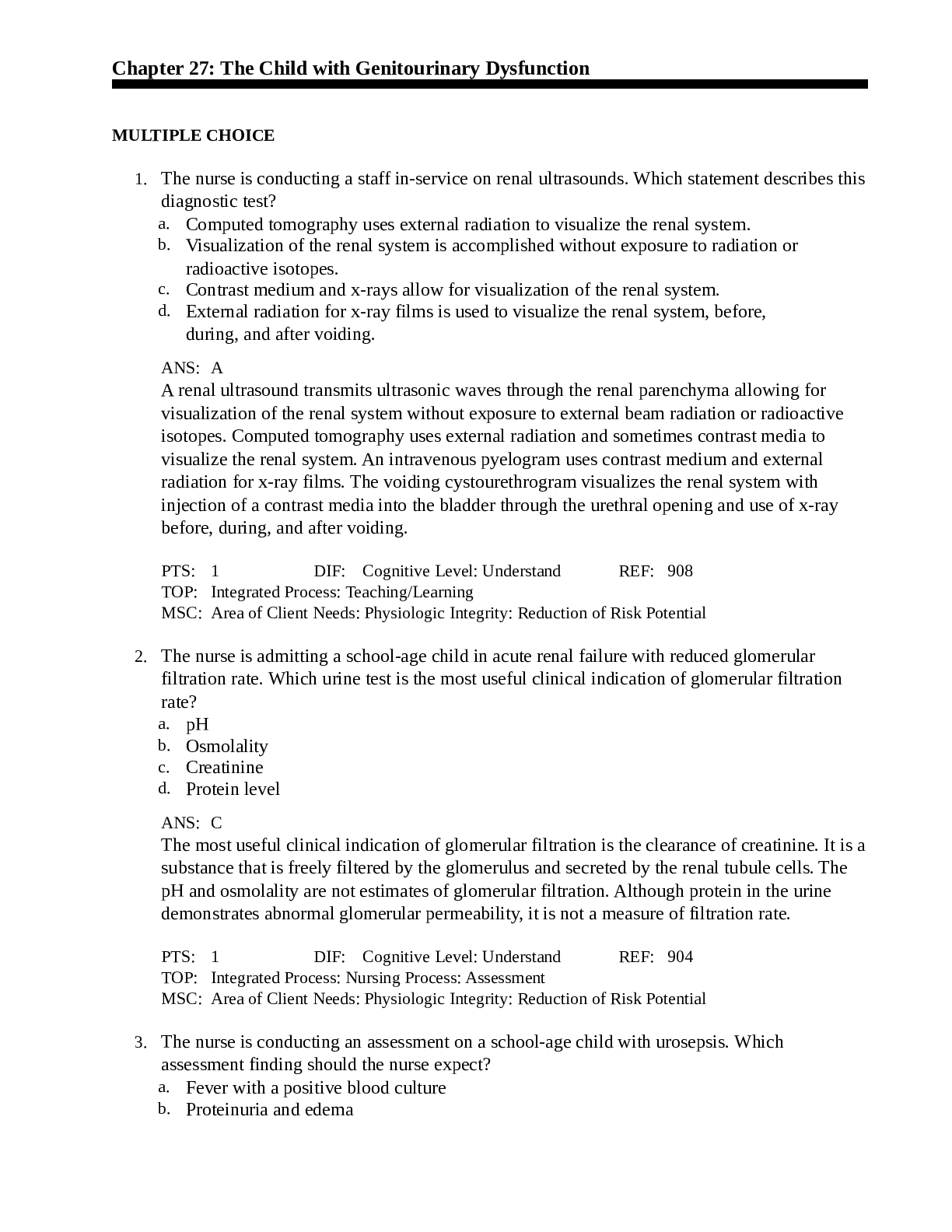
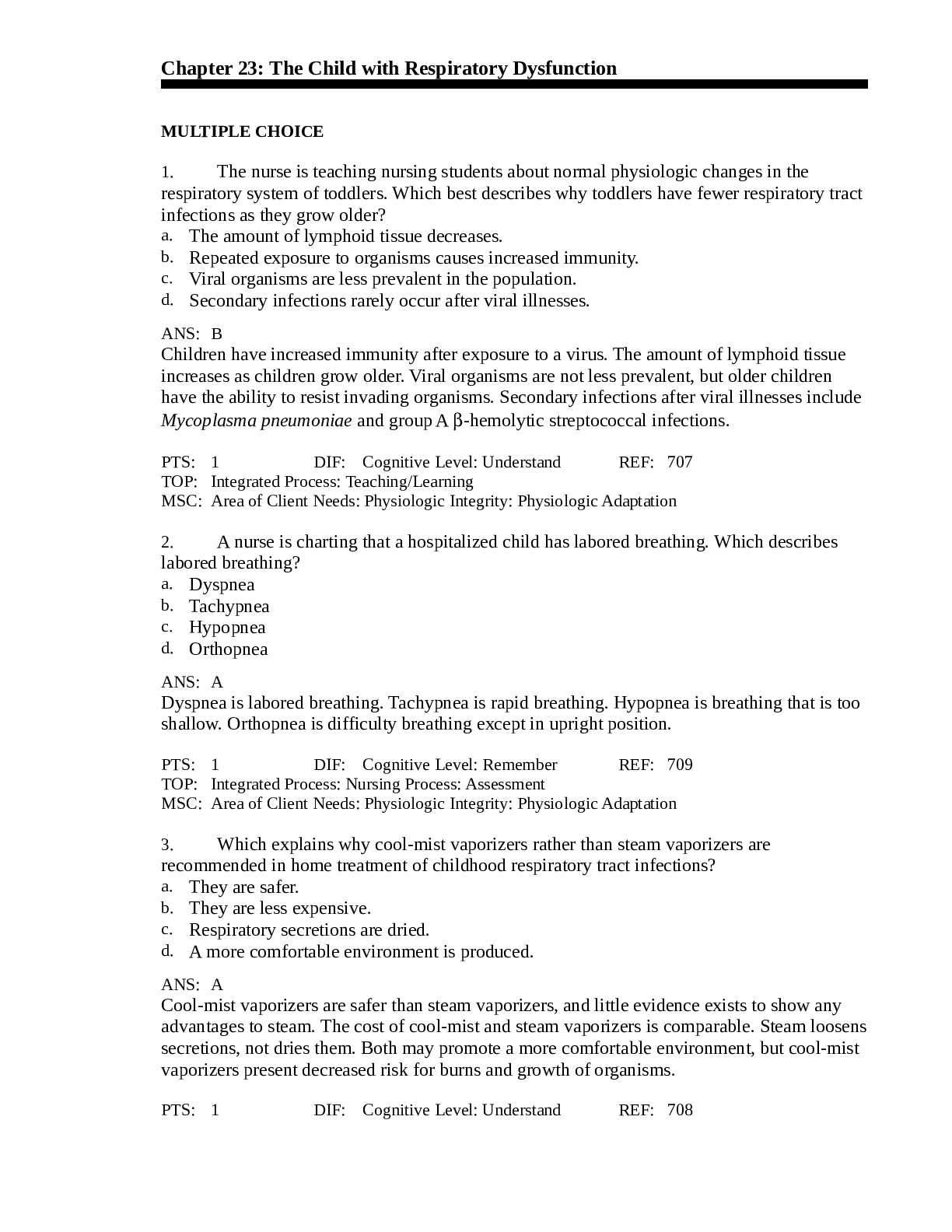
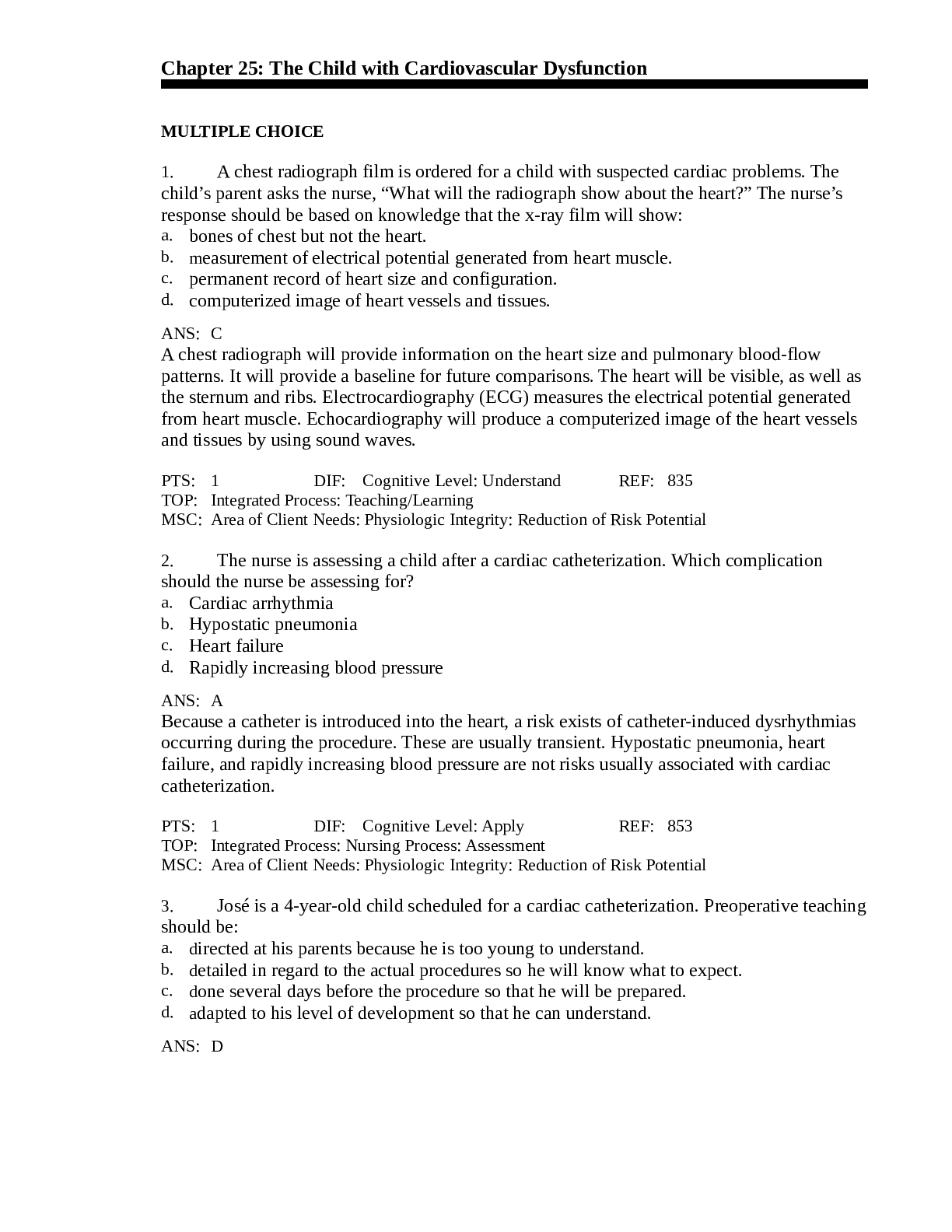
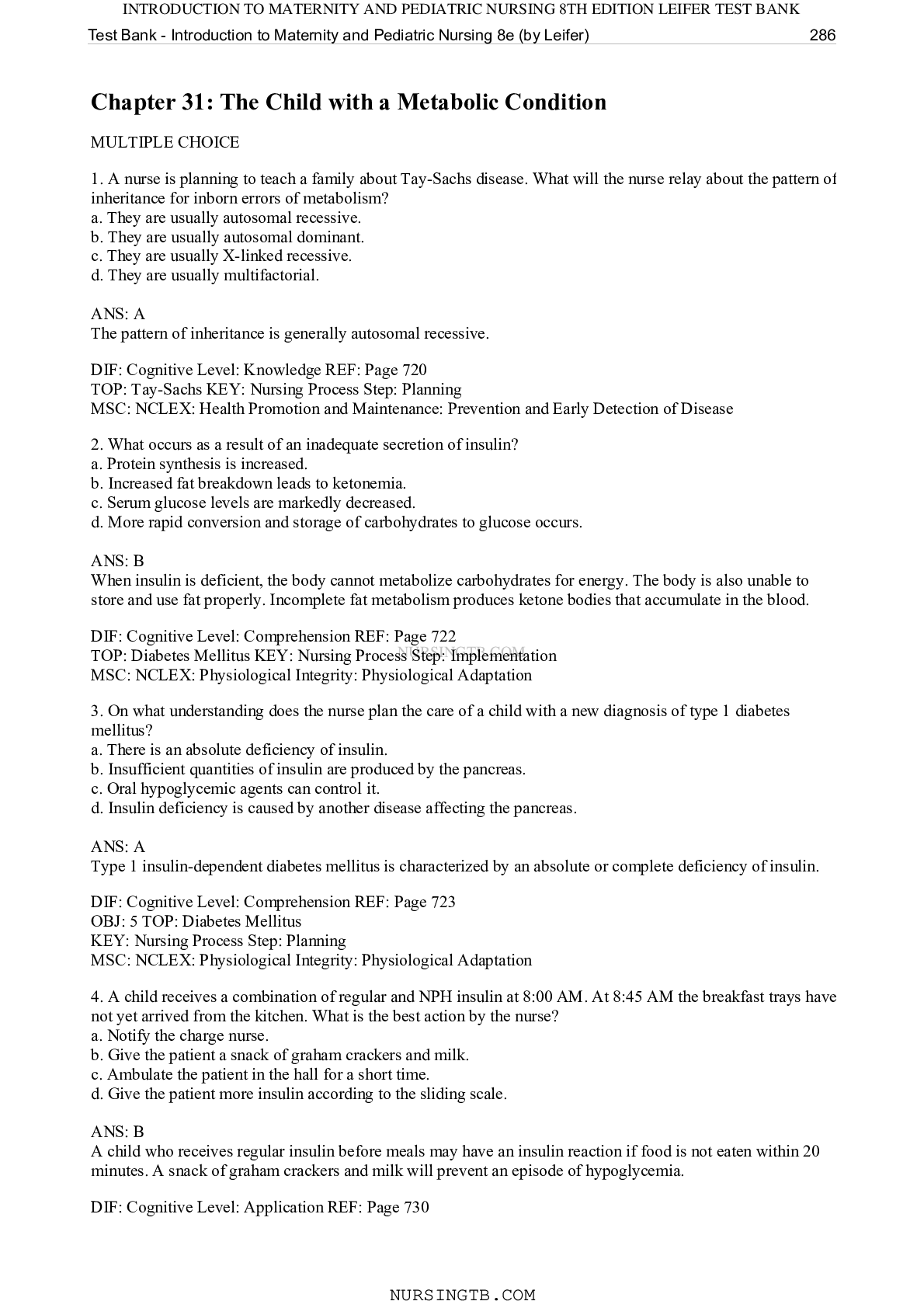
 (1).png)





